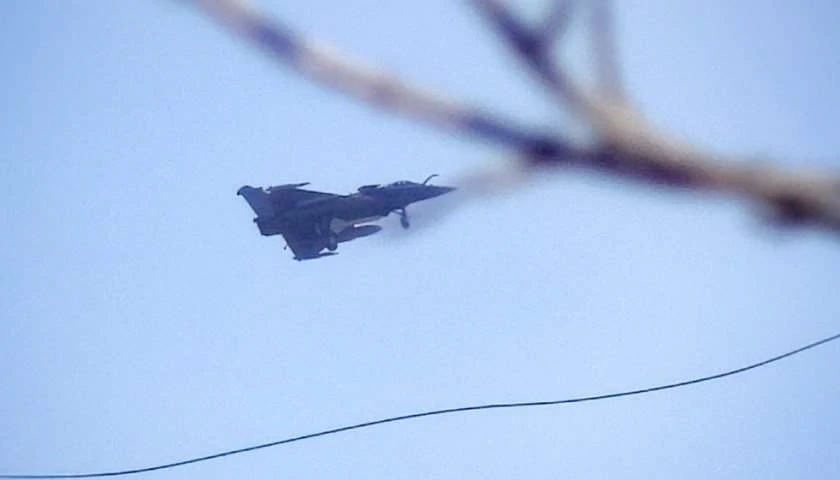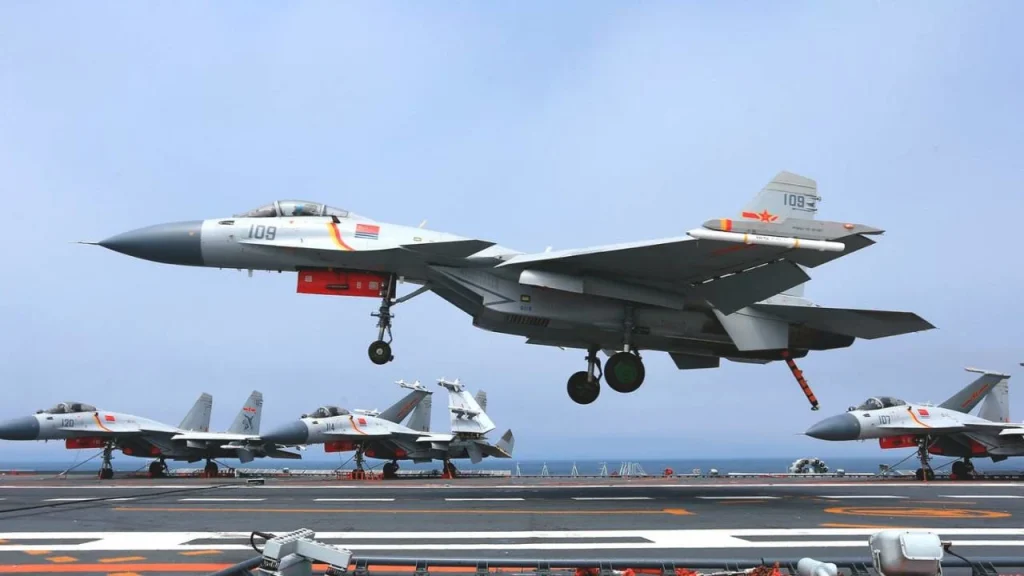In India, Dassault Aviation and Team Rafale had participated in an extensive testing campaign to determine the performance of their fighter, the Rafale Marine (Rafale M), operating from an aircraft carrier equipped with a ski-jump rather than catapults like the Charles de Gaulle used by the French Navy. This campaign began at the beginning of January 2022. The ski-jump configuration in the land-based testing centre at INS Hamsa is comparable to that used on the two aircraft carriers employed by the Indian Navy, the INS Vikramaditya, which is already in service, and the INS Vikrant, which was built entirely in India and has been inducted into the service.
The aircraft needed to demonstrate that it could take off from such a ski jump and determine the operational capabilities and limitations that resulted from such a procedure, particularly concerning fuel capacity and weapon load.

A photo (as seen above) that was circulated on Indian social media offered vital insights into the capabilities of the aircraft in this configuration. The photo suggests that the Rafale is just as capable of a ski jump as it is with a catapult.
As per Meta Defence, the photograph showed the Rafale M with an impressive payload, which includes two subsonic fuel tanks with a capacity of 2,000 litres each, two Mica EM missiles with a range of medium to long distances, two Mica IR missiles designed for self-defence, and an AM-39 Exocet anti-ship missile concealed within the fuselage. When conducting anti-ship operations, the French Navy deploys the Charles de Gaulle with a configuration comparable to this one.
This photograph, which was taken after a ski-jump takeoff test in Goa and for which there is no reason to doubt its authenticity, demonstrates that the Rafale is capable of carrying heavy loads, more than 5.5 tonnes in external payloads, and thus reaching a maximum takeoff weight in the ski-jump configuration of between 20 and 21 tonnes, which is very close to the weight that is typically used on French aircraft carriers.
In addition, the Rafale, in this configuration, has an outstanding operational range of approximately one thousand kilometres. This is much larger than the range obtained by, for instance, the J-15 deployed on Chinese aircraft carriers. In the future, the Indian Navy would go up against Chinese aircraft carriers armed with J-15 versions and possibly even stealthy J-35s.
Compared to the Rafale, which has an empty weight of 10.5 tonnes, the J-15 has an estimated maximum takeoff weight of 27 tonnes, while its weight, when empty, is 17 tonnes. This is because it requires much more energy and fuel to take off and remain in flight than the Rafale.
The Russian and Chinese turbofan engines that power the J-15 aircraft used by the Chinese PLA Naval Air Force are notorious for their high fuel consumption, in contrast to the M88 turbofan engine that powers the Rafale, which is renowned for its low fuel consumption.

The flagship fighter jet of the French Air and Space Force, the Rafale fighter, took part in an exercise in Japan last month. This drill was held in response to threats posed by the Chinese carrier-borne J-15 aircraft and other aircraft types.
The image above, as per the publication, revealed a configuration that leads one to believe that the Rafale might give capabilities similar to those it possesses when it is in the catapult configuration, even in the ski-jump structure. This would enable the Rafale to be employed for various tasks, including air defence, long-range strikes, reconnaissance, and even aerial refuelling of other Rafale aircraft, if necessary.
In other words, the Rafale would be capable of performing the same missions, with very little difference, from a ski-jump carrier as from a catapult-equipped carrier and even from its land-based version, significantly outperforming other aircraft that could also be deployed on such carriers, such as the Russian MIG-29K and Su-33, the Chinese J-15, the F-35B, and the F-22.
The selection of Rafale by the Indian Navy has the potential to open up new export options for French aircraft beyond their contract with India. Demonstrating its capabilities in successfully operating from carriers equipped with ski-jump ramps could make it an appealing choice for countries with similarly configured carriers or those considering implementing such systems. The adaptability of the Rafale and its exceptional operational range could further boost the aircraft’s appeal on the global market for naval aviation. Compared to other carrier-capable aircraft, Rafale’s small size enables it to be favoured by countries considering smaller carriers.
Rafale is an aircraft of the 4.5th generation that is still being sold and upgraded. It implies the Indian Navy and Indian Air Force will operate a plane that will be pertinent for at least 20 years, following which India will have its own indigenous or joint options.

Frontier comme on break barrier lead from frontline Hindustan zindabad123